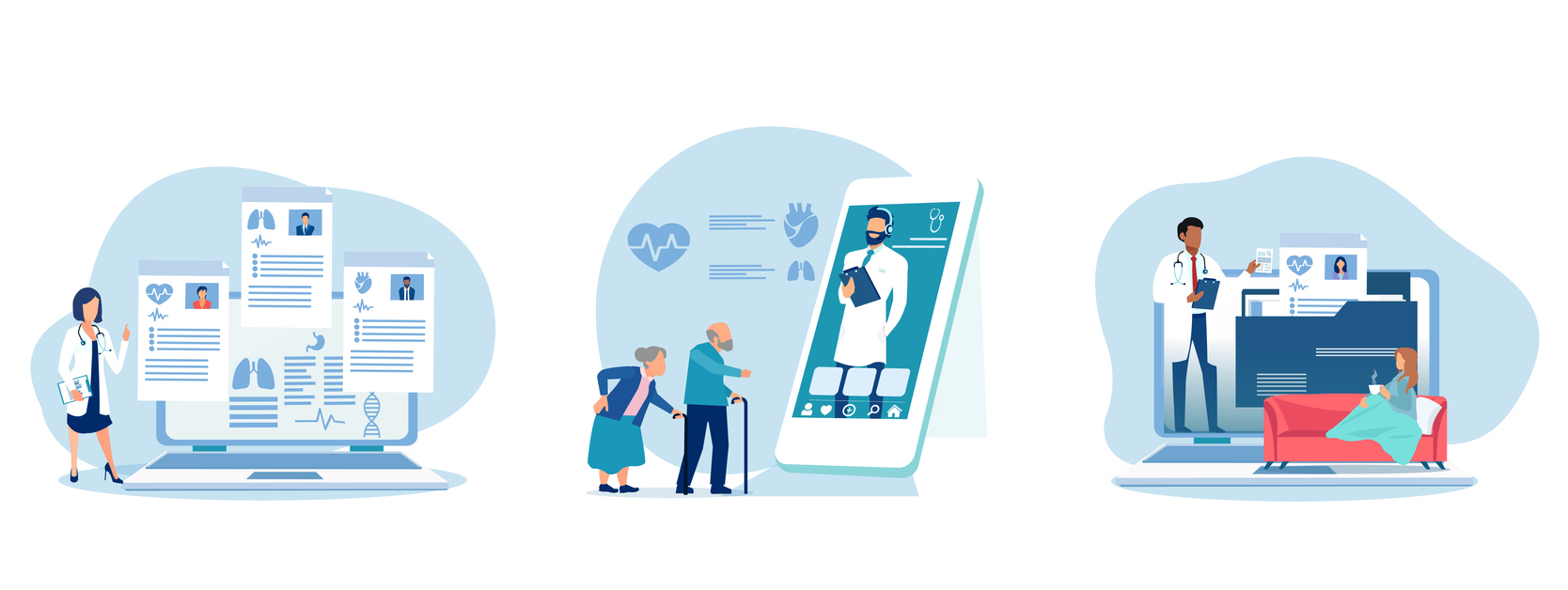How telehealth can address inequities — and change the future of health care delivery
 The lack of access to health care is often the biggest challenge that patients encounter when they are sick or seeking preventive care. Patients can face weeks of waiting to see a provider and insufficient time with that provider once they are finally seen. For many, access remains out of reach, particularly for those living in rural areas or under-resourced communities.
The lack of access to health care is often the biggest challenge that patients encounter when they are sick or seeking preventive care. Patients can face weeks of waiting to see a provider and insufficient time with that provider once they are finally seen. For many, access remains out of reach, particularly for those living in rural areas or under-resourced communities.
With virtual and digital capabilities becoming more convenient and widely adopted, consumers today have more options in how they access their care. The past year has seen people become increasingly comfortable with virtual care and, according to our recent Health Care Insights Study, 59% of consumers feel it is important to their health that they have access to virtual and telehealth services. This greater acceptance of virtual care, combined with the proliferation of telehealth options in the past few years, offers a promising solution to closing gaps in health care inequities and helping shape a better care delivery model for all.


 As we head into May, National Mental Health Awareness Month, it is important to acknowledge the gains made to reduce mental health stigma in the workplace. When I started in the employee assistance field over 16 years ago, many organizations were reluctant to speak openly about mental health beyond the concepts of “stress” and “resilience.” Now, campaigns such as Just Five, StigmaFree and Mental Health First Aid are common in workplace settings (2,4). Organizational leaders, managers and employees are speaking openly about their own mental health challenges, reducing traditional taboos. These are important steps in the effort to place mental health awareness on the same level as other physical health needs.
As we head into May, National Mental Health Awareness Month, it is important to acknowledge the gains made to reduce mental health stigma in the workplace. When I started in the employee assistance field over 16 years ago, many organizations were reluctant to speak openly about mental health beyond the concepts of “stress” and “resilience.” Now, campaigns such as Just Five, StigmaFree and Mental Health First Aid are common in workplace settings (2,4). Organizational leaders, managers and employees are speaking openly about their own mental health challenges, reducing traditional taboos. These are important steps in the effort to place mental health awareness on the same level as other physical health needs. A recent email started like this: “I have had a few situations recently where managers are becoming impatient with employees who are parents, feeling that the pandemic is over and the desire to get “back to normal.” The sentiment is very real and understandable, compounded by pressure from the top, but for caregivers, life is not normal, and many of the challenges presented by the pandemic endure. The incidence of serious mental health issues like depression and anxiety remains at crisis levels. Concerns about kids’ learning gaps and mental health, persistent illnesses and sick days, the specter of layoffs, confusing return to office messaging and plans, and economic instability have all impacted retention, advancement and efforts to make organizations more equitable and inclusive.
A recent email started like this: “I have had a few situations recently where managers are becoming impatient with employees who are parents, feeling that the pandemic is over and the desire to get “back to normal.” The sentiment is very real and understandable, compounded by pressure from the top, but for caregivers, life is not normal, and many of the challenges presented by the pandemic endure. The incidence of serious mental health issues like depression and anxiety remains at crisis levels. Concerns about kids’ learning gaps and mental health, persistent illnesses and sick days, the specter of layoffs, confusing return to office messaging and plans, and economic instability have all impacted retention, advancement and efforts to make organizations more equitable and inclusive. Starting April 1, 2023, employees no longer eligible for Medicaid may look to employer-sponsored health insurance to stay covered.
Starting April 1, 2023, employees no longer eligible for Medicaid may look to employer-sponsored health insurance to stay covered.